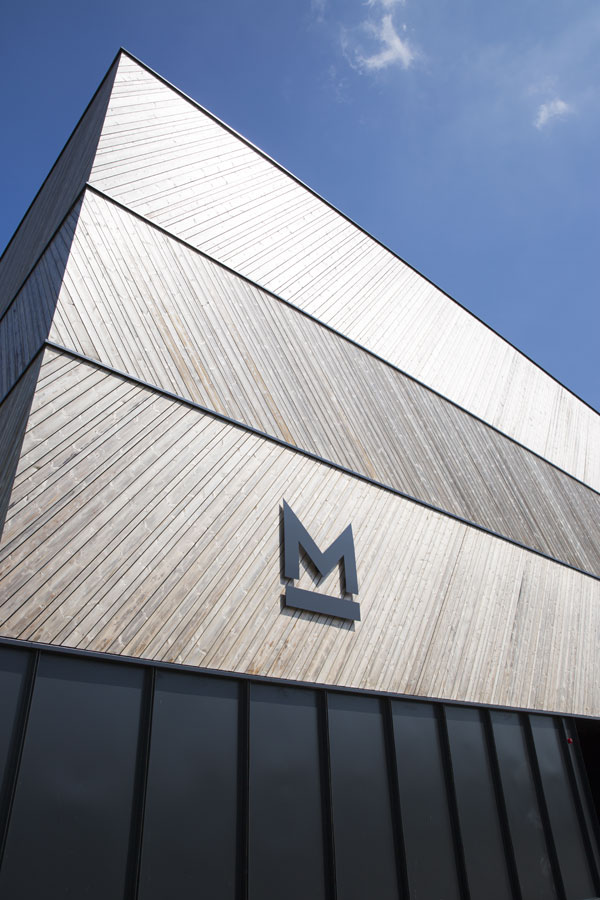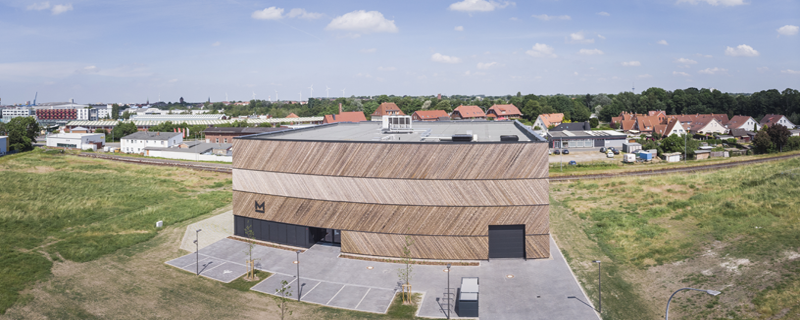 Sleek, sustainable and striking, the recent development by Haslob Kruse + Partners fuses past and present with an expansive wooden exterior made with sustainable leader, Kebony wood, which was selected to house over 60,000 precious maritime artefacts at Germany’s National Maritime Museum in Bremerhaven.
Sleek, sustainable and striking, the recent development by Haslob Kruse + Partners fuses past and present with an expansive wooden exterior made with sustainable leader, Kebony wood, which was selected to house over 60,000 precious maritime artefacts at Germany’s National Maritime Museum in Bremerhaven.
Clad entirely in sustainably sourced Kebony Character wood and containing 2,300 square metres of depot space, the German Maritime Museum houses an extensive collection of archival materials and museum objects: preserving Germany’s maritime heritage with a forward-thinking and eco-conscious approach to architecture.
Designed with a focus on modernity and eco-conscious construction, the German Maritime Museum has harnessed the latest developments in warehousing, air conditioning, and technology, whilst simultaneously making use of sustainable materials in the construction process. The result is a museum depot which is vast in size, but grounded in environmentally-sound practice, which also offers a solution to concerns about limitations in space to contain this precious historical collection.
Created to enable future generations to better understand the relationship between man and the sea, the depot contains an extensive collection of 380,000 archival materials and 60,000 museum objects. This unique maritime vision is realised by the joint pattern of Kebony wood, which resembles the hull of a wooden ship, creating a unique sense of place which is both striking and recognisable.
Kebony’s modified timber is dimensionally stable, long-lasting, and preserves its natural aesthetic for many years. The durability of the material means it will require as little maintenance as possible and withstand the high stresses on the building from wind, weather, and salt water.
A global leader in the production of environmentally friendly wood, Kebony’s pioneering wood-processing technology sees sustainably sourced softwoods heated with furfuryl alcohol, an agricultural by-product, modifying it to maintain the same durable properties of industrial hardwoods without the need for extensive deforestation. Kebony wood is both cost-effective and visually attractive, retaining a natural aesthetic in keeping with the maritime theme of the museum.
Jens Kruse, Architect at Haslob Kruse + Partner Architekten BDA, commented: “We discussed for a long-time which material would be suitable here on the water with the salty air and the strong wind. In the end, together with the client, we opted for Kebony wood because it is a very durable and easy-care wood and is also produced sustainably.”
Nina Landbø, International Sales Manager at Kebony, commented: “The German Maritime Museum in Bremerhaven is the perfect setting for preserving the rich maritime history of the area. We are pleased to have been involved in such an exciting and important project, which has a long-life guarantee for future generations to enjoy.”





Leave a Reply
Want to join the discussion?Feel free to contribute!